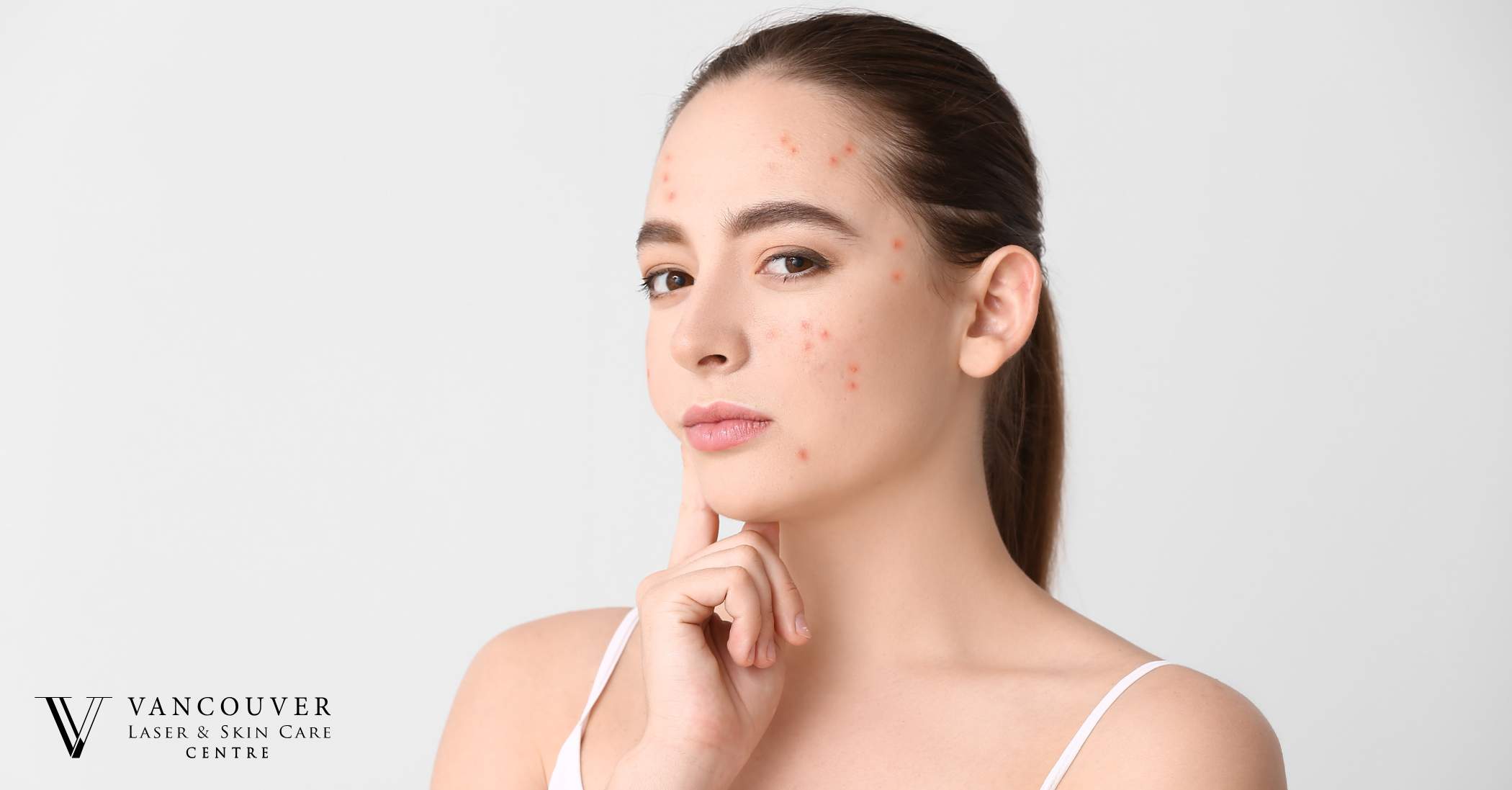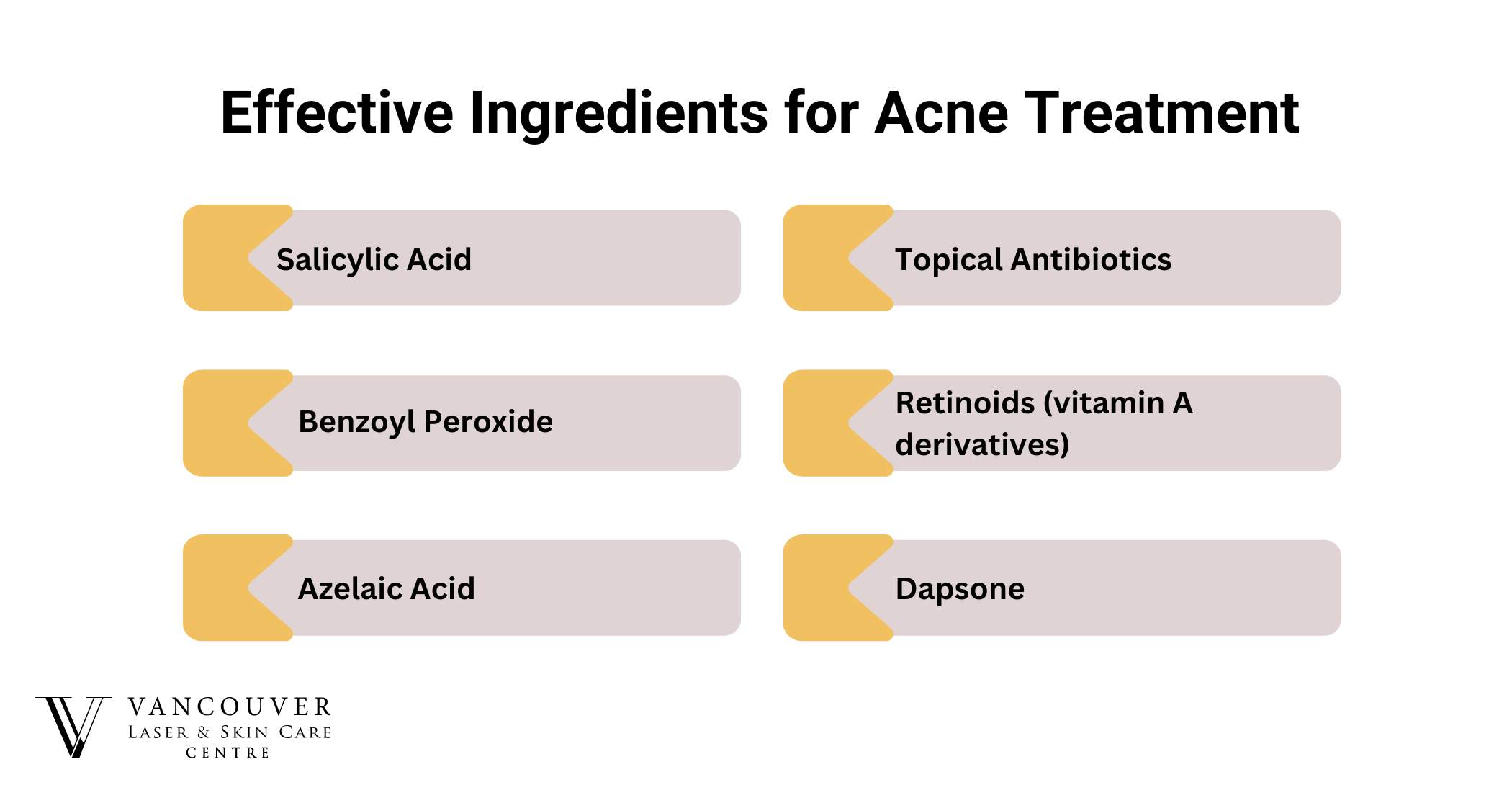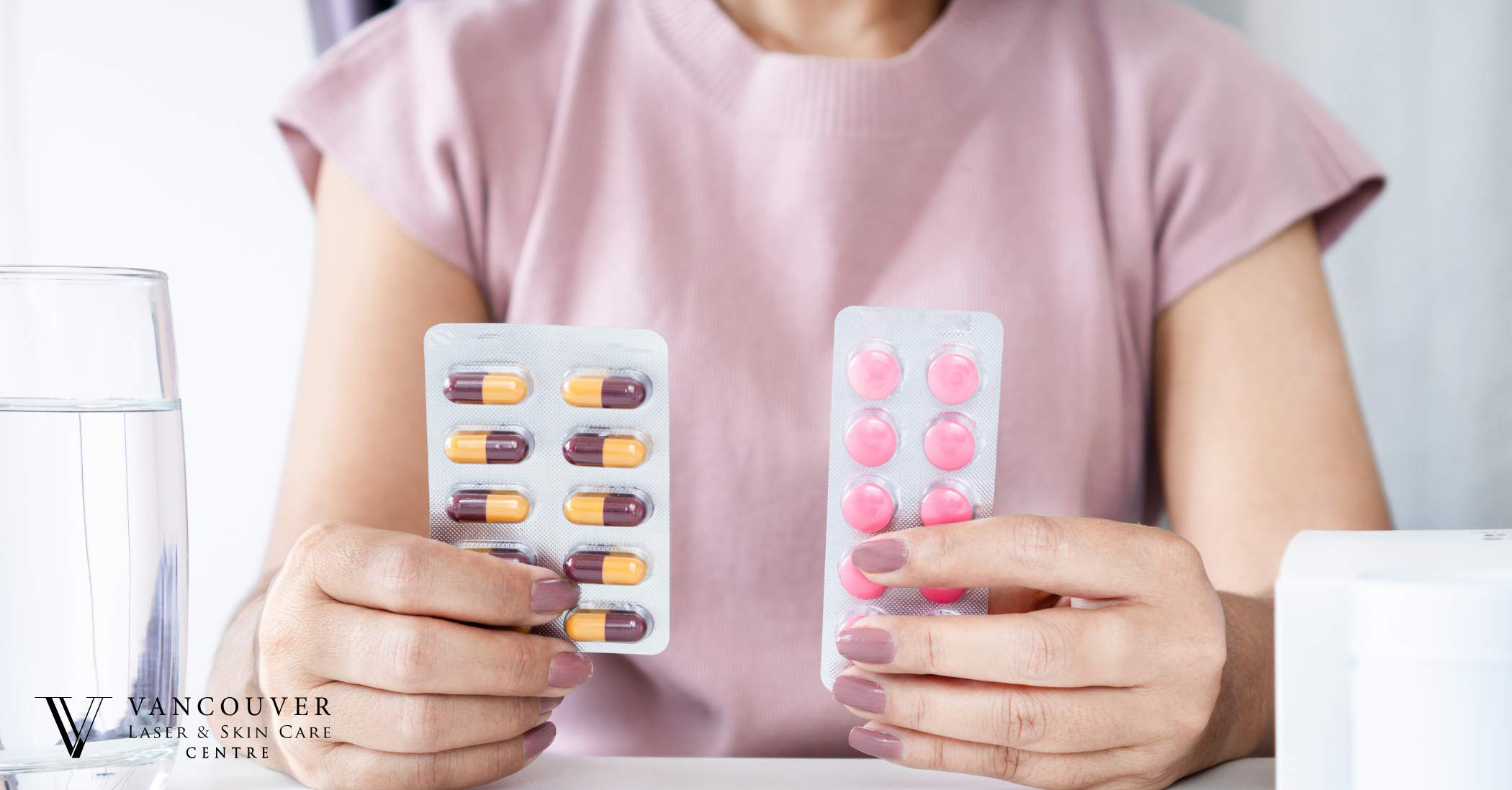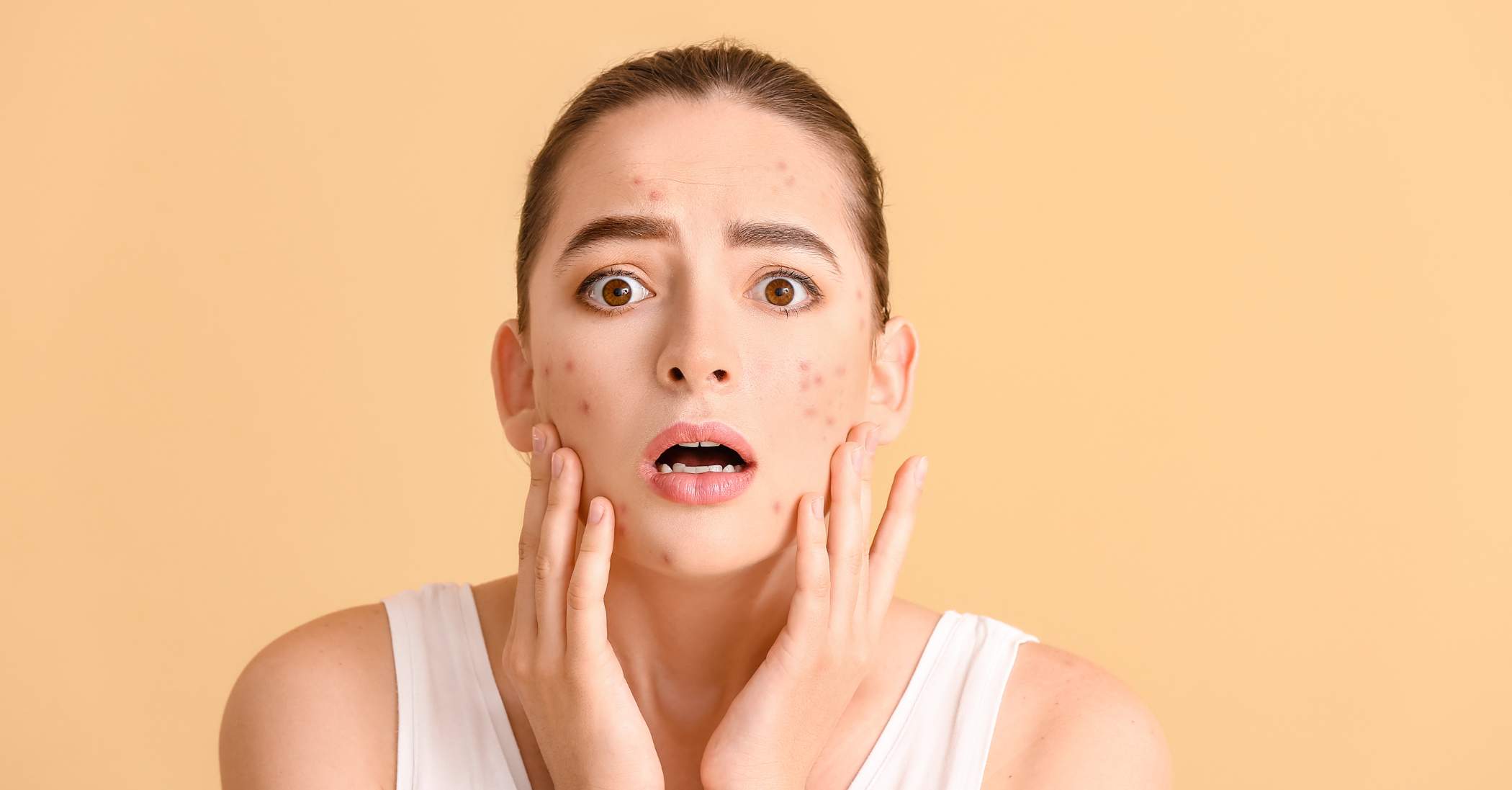Acne is one of the most common skin conditions, affecting people of all ages—from teenagers to adults. It occurs when hair follicles become clogged with oil, dead skin cells, and bacteria, leading to blemishes like whiteheads, blackheads, and pimples. Hormonal changes, stress, and lifestyle factors can contribute to or worsen acne at any stage of life.
Beyond physical discomfort, acne can impact mental well-being, often leading to stress and self-esteem issues. Fortunately, acne is highly treatable with the right skincare routine.
Read on to learn more about acne, including its types, causes, and effective treatments to help you achieve clearer, healthier skin.
What is Acne?
Acne is a common skin condition caused by the blockage of hair follicles. When sebum (an oil that prevents skin from drying out) and dead skin cells clog the pores, they lead to outbreaks known as pimples or zits. These typically appear on the face but can also develop on the back, chest, and shoulders.
Acne affects the skin’s sebaceous (oil) glands, which are connected to hair follicles. In healthy skin, these glands produce sebum that flows up the pores to the surface. Normally, skin cells called keratinocytes rise to the surface and shed naturally.
With acne, hair, sebum, and keratinocytes cluster in the pore, blocking more cells and sebum from being released. This trapped environment allows bacteria on the skin to multiply, causing inflammation, redness, and pain. If the clogged pore breaks, it releases bacteria, skin cells, and sebum into nearby skin, resulting in visible lesions or pimples.
While acne often clears up by age thirty, some may experience it into their forties or fifties.

What causes acne?
Four major factors contribute to acne:
- Excess oil (sebum) production
- Clogged hair follicles from oil and dead skin cells
- Bacteria
- Inflammation
Acne commonly appears on the face, forehead, chest, upper back, and shoulders, as these areas have the most oil glands connected to hair follicles. When a follicle wall bulges, it forms a whitehead. If the clogged pore remains open, the top darkens, creating a blackhead. This isn’t dirt but rather bacteria and oil that darken upon exposure to air.
Pimples are red, inflamed bumps that may have a white tip, occurring when hair follicles become infected. Deeper blockages and inflammation in hair follicles can lead to cyst-like lumps under the skin, while sweat gland pores generally don’t cause acne.
Factors That May Increase Acne Risk:
While acne is primarily caused by blocked pores, certain factors can heighten the risk or exacerbate existing symptoms. These include:
Hormonal Changes
Androgens increase during puberty in both boys and girls, enlarging sebaceous glands and boosting sebum production. Hormonal shifts, especially in midlife women, can also trigger breakouts.
Certain Medications
Drugs like corticosteroids, testosterone, and lithium may cause acne as a side effect.
Diet
High-carb foods like chips, bread, and bagels may contribute to acne, though more research is needed to determine specific dietary impacts.
Stress
While stress doesn’t cause acne, it can worsen existing symptoms, making flare-ups more noticeable.
Types of Acne
If you have acne, you may notice different types of bumps on your skin. The most common are whiteheads and blackheads, also known as comedones:
- Blackheads (Open Comedones)
These appear at the skin’s surface. When exposed to air, the top darkens due to oxidation—not dirt. - Whiteheads (Closed Comedones)
These are small, flesh-colored bumps just beneath the skin.
Other, more inflamed acne types may lead to scarring:
- Papules
Small, red bumps caused by inflammation or infection of hair follicles. - Pustules
Red pimples with a white, pus-filled tip. - Nodules
Solid, often painful lumps that develop beneath the skin. - Cysts
Large, painful lumps filled with pus, deep under the skin.
Effective Acne Treatments at Vancouver Laser
At Vancouver Laser & Skin Care Centre, we specialize in advanced acne treatments tailored to target the root causes of breakouts for clearer, healthier skin. Our expert team offers a range of professional solutions designed to address acne from multiple angles, ensuring personalized care for your unique skin concerns:
SYLFIRM X
This innovative microneedling technology addresses acne at its source. SYLFIRM X promotes the skin’s natural healing process, reduces inflammation, and helps clear existing breakouts while preventing future ones.
Clear Glow (Frac3)
Excessive oil production is a key contributor to acne. Clear Glow treatments balance oil levels, improve skin clarity, and minimize breakouts without the use of harsh products.
HydraFacial
A deep-cleansing treatment that removes oil, dirt, and debris from clogged pores, HydraFacial leaves your skin nourished and glowing while reducing breakouts.
IPL Photofacial
Intense Pulsed Light (IPL) technology reduces excess oil production and shrinks overactive oil glands, helping to prevent new acne breakouts before they start.
Microdermabrasion
By exfoliating the skin and removing dead cells that trap bacteria, microdermabrasion reduces breakouts and promotes smoother, healthier skin.
Key Ingredients in Acne-Fighting Products
Doctors often prescribe topical acne treatments, which you apply directly to the skin like lotion or moisturizer. These may include products with ingredients such as:

Salicylic Acid
Available over-the-counter in cleansers and lotions, salicylic acid helps remove the skin’s damaged top layer. It dissolves dead skin cells that can clog hair follicles.
Benzoyl Peroxide
Found in products like Clearasil®, Stridex®, and PanOxyl®, benzoyl peroxide targets surface bacteria that aggravate acne. Lower concentrations and wash formulations are gentler on the skin.
Azelaic Acid
A natural acid in grains like barley, wheat, and rye, azelaic acid kills microorganisms on the skin and reduces swelling.
Topical Antibiotics
Antibiotics such as clindamycin and erythromycin reduce surface bacteria. They are often more effective when combined with benzoyl peroxide.
Retinoids (vitamin A derivatives)
Retinoids like Retin-A®, Tazorac®, and Differin® (OTC) prevent clogged pores by breaking up blackheads and whiteheads. These aren’t spot treatments and should be used on the entire affected area. Results typically appear after a few months of consistent use.
Dapsone
This topical gel has antibacterial properties and treats inflamed acne effectively.

Oral Acne Medications
Oral medications come in pill form and can effectively reduce acne. Common types include:
Antibiotics
Antibiotics like tetracycline, minocycline, and doxycycline target bacteria that contribute to acne. They are effective for moderate to severe acne.
Contraceptives
Certain birth control pills, such as Estrostep®, Beyaz®, Ortho Tri-Cyclen®, and Yaz®, are FDA-approved for treating acne in females and AFAB individuals. They contain estrogen and progesterone to help regulate hormone levels.
Isotretinoin
This oral retinoid, sold under names like Amnesteem®, Claravis®, and Sotret®, reduces the size of oil glands, helping to prevent acne.
Hormone Therapy
Hormone therapy, including low-dose birth control pills or medications like spironolactone, can be effective for those who experience acne flare-ups during menstruation or from excess androgen. This treatment blocks certain hormones at the level of hair follicles and oil glands.
Conclusion
While acne can be persistent and frustrating, it’s manageable with the right combination of treatments and lifestyle adjustments. Options range from topical creams to advanced treatments like laser therapy and facials, catering to all types and severities of acne.For a personalized approach, consider the innovative acne treatments at Vancouver Laser. Our certified team works with you to create a treatment plan that addresses current breakouts and helps prevent future ones. Book a consultation today and start your journey to clearer, healthier skin.
FAQs
1. Is acne the same as pimples?
Acne is a skin condition involving blocked hair follicles, leading to different blemishes. Pimples are one type of acne, but acne also includes blackheads, whiteheads, nodules, and cysts.
2. At what age is acne the worst?
Acne is most common in teens aged 14 to 19, often requiring more treatment for moderate to severe cases.
3. Should I pop my pimples?
Avoid popping pimples—it can worsen infection and cause scars. Instead, try salicylic acid or benzoyl peroxide, or consult a dermatologist for safe treatments.



